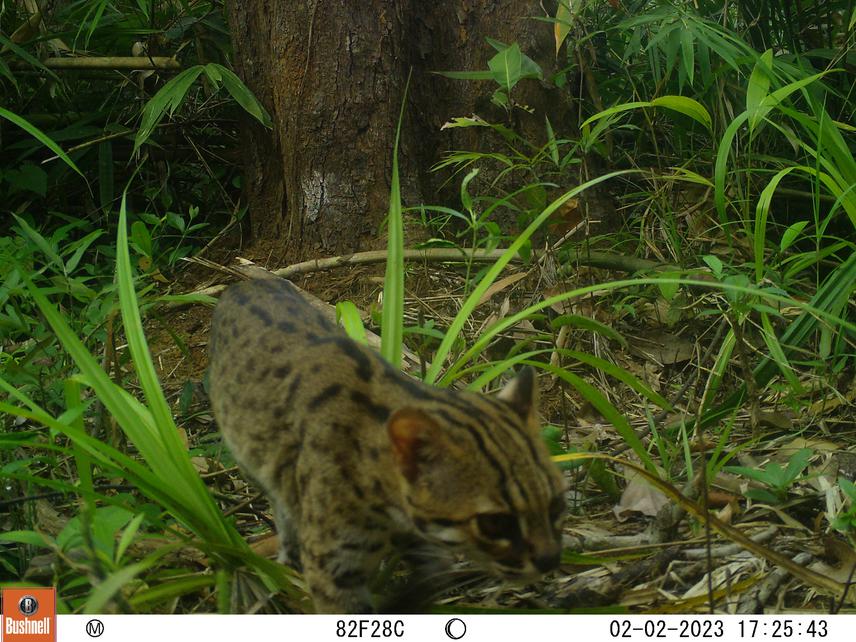Desamarie Antonette Fernandez
Despite its name, Order Carnivora is composed of mammals with a wide variety of dietary habits. Many are primarily carnivorous, while others are omnivorous, and some are even frugivorous. Thus, they may provide important ecosystem services such as population regulation of their prey as well as seed dispersal. In Palawan Island, Philippines, there are seven carnivoran species that are known to occur sympatrically. These are: the binturong (Arctictis binturong), Malay civet (Viverra tangalunga), common palm civet (Paradoxurus philippinensis), collared mongoose (Urva semitorquata), Sunda leopard cat (Prionailurus javanensis), Asian small-clawed otter (Aonyx cinereus) and Palawan stink-badger (Mydaus marchei). However, the exact mechanisms for their co-existence are unknown.

Sunda leopard cat.
In this project, I am studying the co-existence of carnivoran communities through the ecological concept of niche partitioning. I am interested in determining how each species makes use of its time, space, and food resources in order to adapt to an ever-changing environment. Camera traps will be set inside the Puerto Princesa Subterranean River National Park in Palawan Island, Philippines. The occupancy and activity patterns of each target species will be determined for the period of 12 months. Faecal samples will be collected, and molecular and morphological techniques will be used to determine the species identity and dietary composition of each sample. Habitat analysis in each camera trap location will be conducted, and each location will be classified as a certain major habitat type (lowland forest, agroforest, etc.).
Since not much is known about the ecology of these cryptic animals in the Philippines, a great deal of the data from this study will be novel. In order to promote their conservation and long-term survival, this study will create maps of carnivoran distribution hotspots, movement, and predicted habitat suitability, a list of their diet items, and an analysis of possible threats and conservation strategies for carnivorans and their habitat in Palawan Island.
Header: Palawan stink badger.